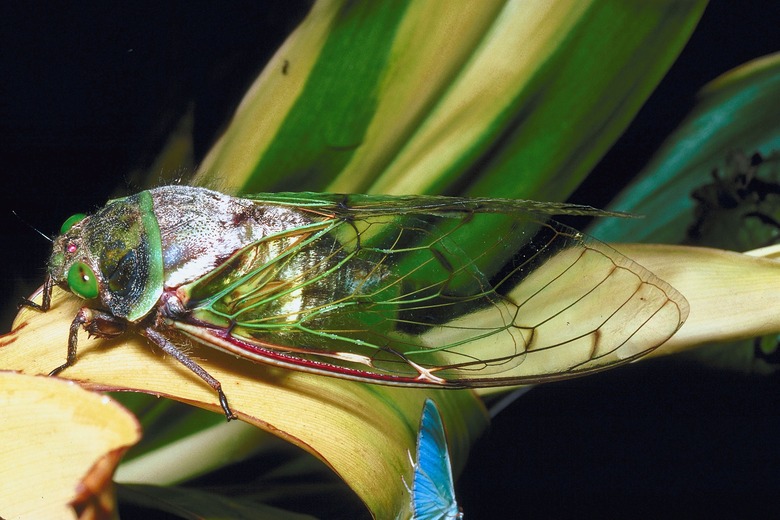Yard Bugs That Dig Holes
While finding holes in the lawn is disturbing to adults, to children they are a place to poke sticks and stuff grass or leaves. Small holes in the lawn, those about the size of a quarter, are made by insects as they burrow in or emerge from underground. Some of the insects may bite or sting, so it is important to determine which insect is creating the holes.
Ants
Step 1
Ants create bare circles of earth in the grass and tunnel through the ground to loosen soil and allow for airflow. Ant holes are about 1/4 inch in diameter and have a mound of soil encircling the area, measuring 2 to 3 inches across. Ant tunnels loosen soil near the lawn roots, drying them out. Small ant tunnels cause insignificant damage, while larger anthills, like those built by fire ants, can kill the lawn in 1- to 2-inch patches, and the hills stick up high enough for lawn mowers to hit them. Ants do bite and sting people.
- While finding holes in the lawn is disturbing to adults, to children they are a place to poke sticks and stuff grass or leaves.
- Small holes in the lawn, those about the size of a quarter, are made by insects as they burrow in or emerge from underground.
Mole Cricket
Step 1
Mole crickets damage the lawn by feeding on grass roots. They burrow into the soil and cause the soil where they dig to dry out rapidly. Female mole crickets dig into the soil to lay eggs, and these pests tunnel and live in 1/2-inch-diameter holes. Mole crickets are nocturnal and can move underneath the soil when it is moist and travel about 20 feet underground each; they may also come above ground and roam. Mole crickets are not harmful to humans or pets.
White Grubs
Step 1
Larvae from several different types of beetles hatch form eggs underground, including green June beetles. Many of them remain in a curled position underground for 10 months or more before emerging. In warm weather, the grubs live just 1 to 3 inches underground, but they'll burrow deeper in cooler temperatures. Grubs feed on lawn roots; moles, skunks and birds all dig into soil to eat grubs. So, grubs cause damage both by feeding on roots and by being sought after by predators.
- Mole crickets damage the lawn by feeding on grass roots.
- Female mole crickets dig into the soil to lay eggs, and these pests tunnel and live in 1/2-inch-diameter holes.
Cicada Killers
Step 1
A cicada killer is a black, yellow-banded wasp about 1 1/2 inches long. These pests tunnel underground and create mounds of dirt at the entrance of these burrows. Their burrowing damages the lawn; however, they generally do not sting people unless they feel threatened. These wasps are called cicada killers because the female stings a cicada to paralyze it before placing it in its nest. The wasp then lays its eggs on the cicada. The eggs hatch and feed on the cicada.
Periodical Cicada
Step 1
Periodical cicadas are also known as 17-year locusts. Female cicadas lay eggs in the bark of twigs, and after the eggs hatch, they drop onto the soil and burrow down, leaving small holes in the lawn. You might notice these holes under trees. While developing underground, these pets use their piercing mouth parts to suck plant juices from the roots of plants for 17 years before emerging. Adult cicadas only live three to four weeks above ground.
- A cicada killer is a black, yellow-banded wasp about 1 1/2 inches long.
- Female cicadas lay eggs in the bark of twigs, and after the eggs hatch, they drop onto the soil and burrow down, leaving small holes in the lawn.
